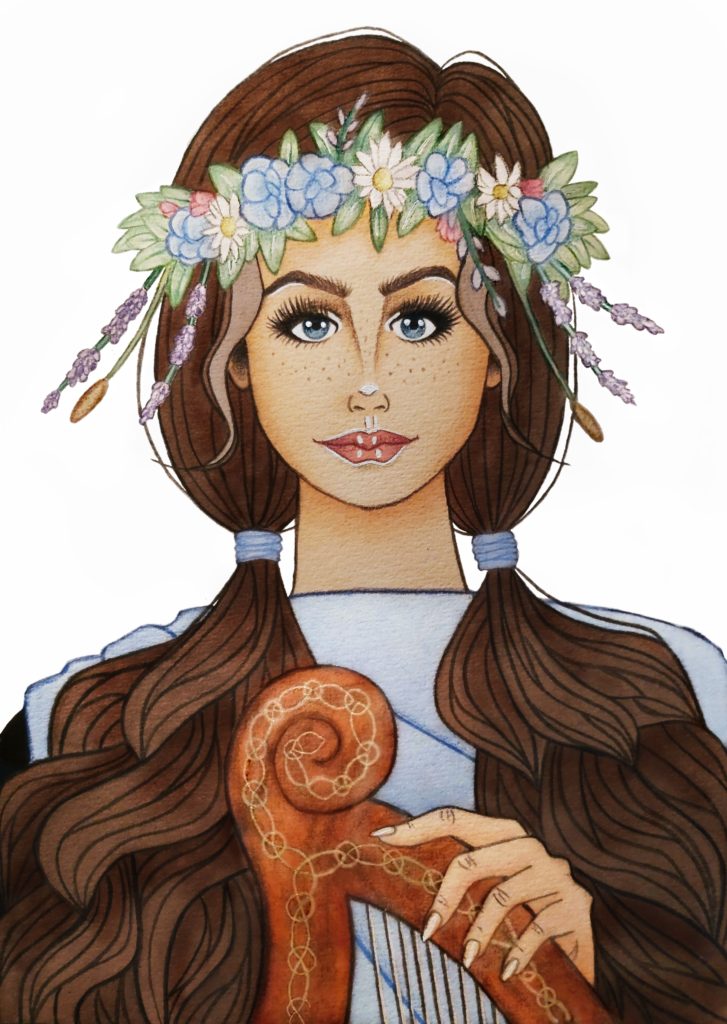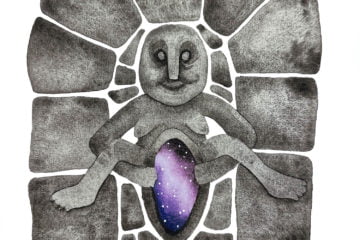
Throughout Irish mythology, there are many figures who’s stories feel as though they may have been partly lost over the centuries of their retellings. Such is the case, in my opinion, with Aoibheall, the mysterious Fairy Queen of Clare.
Links to the Tuatha Dé Danann
Aoibheall is not listed amongst the ranks of the Tuatha Dé Danann, though once you start to read about her it feels as though perhaps she should be. Her sister is named in some accounts as Clíodhna, Queen of the Banshees. We are told that Clíodhna’s father was a druid named Gabann, who served Manannán Mac Lír, the god of the sea. Sadly, we don’t know who Aoibheall’s parents were, but if she shared a father with Clíodhna then she had a direct connection to the Tuatha Dé Danann.
Links to County Clare
Aoibheall is firmly attached to County Clare, and centuries ago was probably a Goddess of sovereignty and kingship in the area. She is said to rule the Sídhe of North Munster, her territory is the land around Killaloe and her dwelling place is in the rocks at Craglea.
Aoibheall is also the fairy guardian of the ancient O’Brien family, who were known as the Dál gCais, or the Dalcassians centuries ago.
Aoibheall’s Harp
Aoibheall was said to have possessed a beautiful golden harp, who’s music heralded the impending death of anyone who heard it. The night before the Battle of Clontarf it is said that the High King Brian Boru heard the music of Aoibheall’s harp and knew that it meant he would die. The following day Brian led his men to victory against the Vikings, but sure enough did not survive the battle himself.
It is also said that Cú Chulainn heard her harp before he met his enemies at Muirthemne, and knew that his life was coming to an end.
Cúirt An Mheán Oíche
Aoibheall appears as a protagonist in the 18th-century poem Cúirt An Mheán Oíche by Brian Merriman.
In the poem she is the judge in a traditional Brehon Court, listening to the complaints of a group of women who claim that men are mistreating women by not marrying them and taking them for granted.
After hearing all of the arguments, Aoibheall decrees that all men must marry by the age of 21 or face reprisal from women.
An Buachaill Caol Dubh
Another of her appearances is in the folk song An Buachaill Caol Dubh. In this song, Aoibheall meets with an alcoholic, who’s addiction is personified as his friend the ‘dark, slender boy’.
Aoibheall offers him a hundred men to let go of his ‘friend’ but the drinker declines, saying that he would be loyal to his friends until he died. Acknowledging that his addiction would kill him.
Relationship with Clíodhna
Aoibheall’s rivalry with her sister Clíodhna is famous. It is said that the two fell in love with the same man, a young chieftan from the south named O’Caoimh. At one point the rivalry that this caused between them was so strong that Clíodhna put a spell on Aoibheall and turned her into a white cat
In Conclusion
Aoibheall is a complex and mysterious figure in Irish mythology. Her ties to noteworthy places, families and events make her an important and powerful presence, and the lack of concrete information about her makes her truly fascinating.


